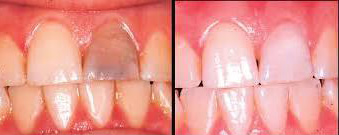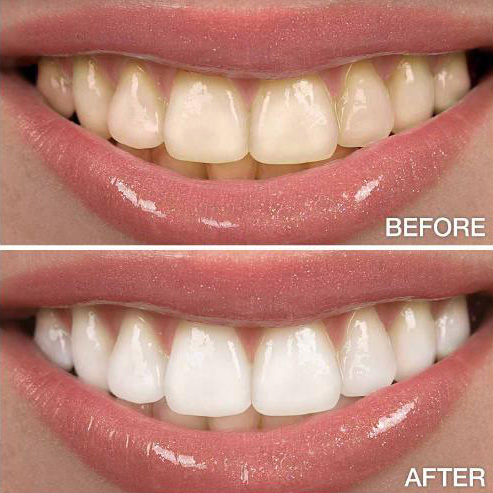Teeth Whitening
Teeth whitening (or bleaching) is a simple, non-invasive dental treatment used to change the color of natural tooth enamel and is an ideal way to enhance the beauty of your smile. Teeth whitening is not permanent. A touch-up maybe needed every several years, and more often if you smoke, drink coffee, tea, or wine.

Most dental practices offer two types of whitening:
- Laser / In-Surgery Teeth Whitening
- Professional Home Whitening Kits
Both procedures are done using a peroxide-based bleaching gel of varying strength (10%-16% peroxide). The higher the concentration of peroxide in the gel, the more powerful it is and the results of teeth whitening are more effective.
Home Bleaching:
Bleaching trays are given to patients. Bleach is applied into those trays as described. Patient wears the tray for recommended time according to the concentration (2-4 hours).
Patient must brush his teeth before and after the application and avoid consumption of coloring products during treatment.
Disadvantage of home bleaching is the long term (about 1 month) needed for whitening, while the advantage is its being more affordable.
Office Bleaching:
igh concentrated bleach is applied by the dentist at clinic. Gum is covered with a protective layer. Sessions are 45 minutes long and the number is decided upon severeness of coloring.
Quick result and furter whitening (when home method is inadequate) are this method's advantages.
Endodontic Bleaching:
Endodontic bleaching is performed on devitalized teeth that have undergone root canal treatment. Opposite to other methods this brightens teeth from the inside out.
Dentist controlled whitening is not harmful for the teeth. Enamel does not wear off, instead, coloring molecules are removed through enamel. Sensitivity in following days are normal and temporary.
Maintenance of light shade achieved depends on patient's care.
Bleaching does not change color of composite fillings or porcelain.

